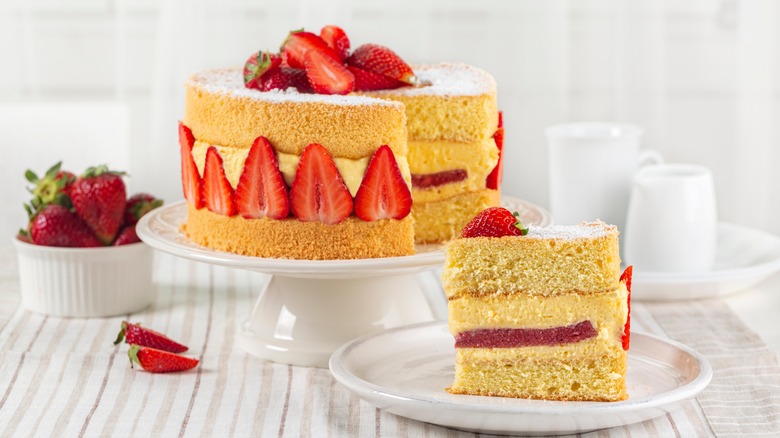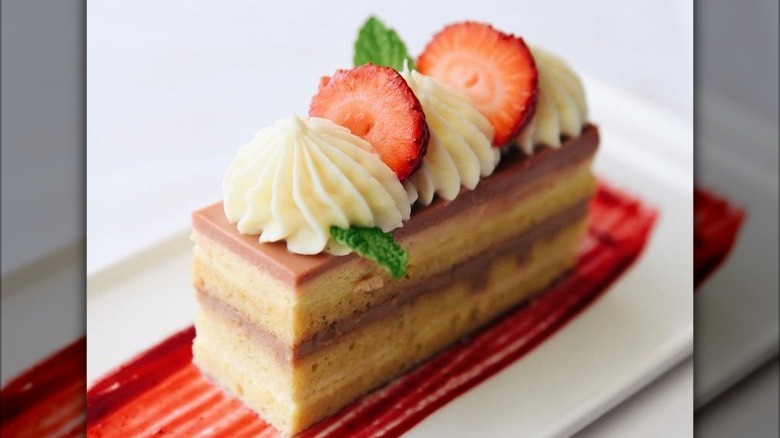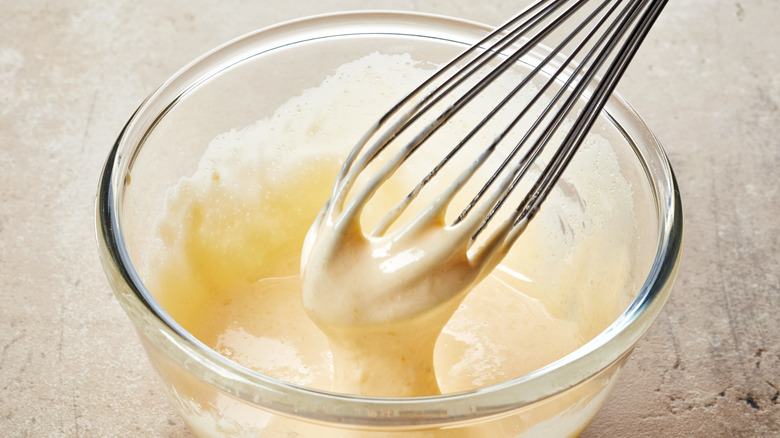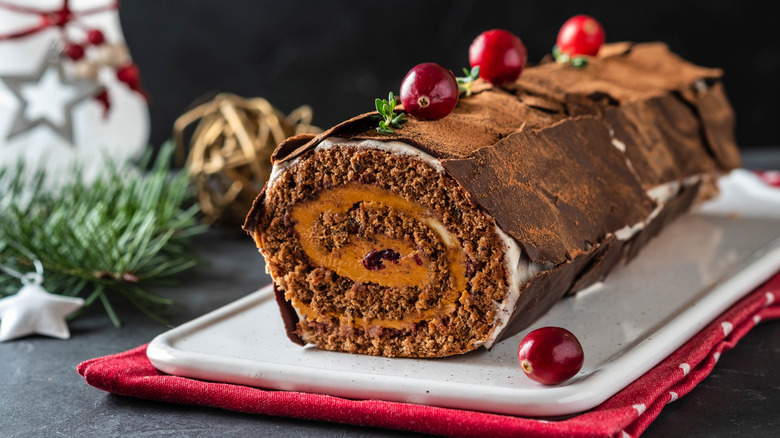What Sets Genoise Sponge Cake Apart From Other Varieties
Watch any baking competition and you're nearly guaranteed to hear the word "Genoise." "Genoise" is actually the French word for the Italian city of Genoa, reflecting the cake's likely origins. Since its introduction, Genoise sponge cake has become an essential part of many French pastries and is also a popular pick for lots of different desserts. It is often layered with cream and fruit, used in tortes, and shaped in jelly rolls. Genoise sponge cake can even be cut into strips for a tiramisu.
While versatile, the Genoise sponge cake does require some finesse when making it. Beating whole eggs with sugar to achieve the proper volume and then delicately folding in the flour can be challenging. It may not be the easiest sponge cake to tackle, but it's definitely worth the effort. With the use of butter in the recipe, the resulting cake is richer tasting than many of its sponge cake siblings.
History of Genoise sponge cake
Sponge cakes got their start in Italy during the Renaissance. Bakers there created something called "biscuits," which later evolved into the sponge cake. Italian bakers became renowned for their skills and became sought-after employees for the affluent in England and France, introducing their confections to a larger audience. The sponge cake as we know it today really started to catch on in the 1700s.
Some think that Genoise sponge cake may be a descendant of the Genoa cake, which was developed in that Italian city in the early 1800s. But this cake is fancier than Genoise since it has dried fruit and nuts mixed in. In some ways Genoa cake really resembles more of a fruit cake than a sponge cake. Genoa cake also only uses egg yolks, which makes it a bit richer than a Genoise sponge cake.
Over time, French pastry chefs made Genoise sponge cake their own, using it as one of the main elements of French pastries. Visit any French patisserie and you'll see this cake layered with fruit, pastry cream, mousses, and other fillings. It can also be used to make that quintessential French treat: madeleines, which are very small cakes made in scallop-shaped pans.
How is Genoise sponge cake made?
Some consider the Genoise sponge cake as the hardest-to-make item in the sponge cake family. The ingredients seem simple enough: whole eggs, butter, flour, cornstarch or corn flour, and sugar. But there's a reason why baking legend Mary Berry made this cake part of a challenge on "The Great British Bake Off" — the process of making a Genoise sponge cake can be quite delicate, and a false move can lead to a heavy cake.
A Genoise sponge cake begins with the beating of eggs with sugar. There is no rising agent for this cake, so the whipped eggs are the source of all its height. You want this mixture to become thick and reach what is often called the ribbon stage. This means that the batter will look like a ribbon as it drips off a spoon or whisk. Only working with ⅓ to ½ of the flour and cornstarch mixture at a time, gently fold it into the beaten egg batter. Then take ⅓ of the flour-egg batter and fold that into the butter, which has been melted but allowed to cool a bit. Place the batter in a cake pan or jelly roll pan that has been lined with parchment paper or greased and floured (for easier removal later). Then it's time for the oven — and to cross your fingers that the cake will be light and fluffy.
Variations of Genoise sponge cakes
While Genoise sponge cake is commonly a white cake, it can also be transformed into a chocolate-flavored variety by swapping out some of the flour for cocoa powder. And it's this version that is said to have been a favorite of Queen Elizabeth. Chocolate Genoise sponge cake can also be used in Black Forest cakes and in the French holiday dessert Buche de Noel.
Another related cake is Pan di Spagna, which is also known as Italian Genoise. Some sources say this cake originated in Italy's Sicily region when the area was occupied by the Spanish between the 16th to 18th centuries. Others say that the cake actually came from Genoa and is a slightly simpler version of the original Genoise. It got its name — which means "Spanish bread" — after it was served to Spanish royalty. The main difference between Genoise sponge cake and Pan di Spagna is the temperature of the ingredients. For Pan di Spagna, all the elements of the cake are mixed together when they are cold.



